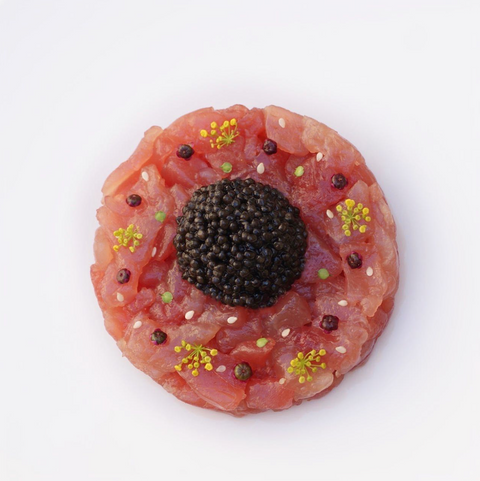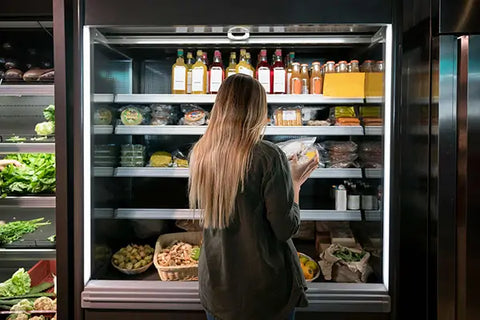Kelp Caviar is made by transforming seaweed into pearls using a process called spherification.
Kelp caviar was invented using the same ideas, concepts, and techniques found in molecular gastronomy but applied in an industrial setting and on a large scale.
The basis is the same – any product containing calcium that comes into contact with alginate (the compound found on algae leaves) will coagulate (create pearls).
How Kelp Caviar is Made (Video)
Watch this short video below, which aired on the famous TV show How It’s Made to see our process from how we create and shape the pearly to how we flavour our seaweed-based kelp caviar from start to finish.
The Process of Making Kelp Caviar
Kelp caviar is made from a gelatinous marine plant called kelp, a type of seaweed. It undergoes a complex 10-step process to go from plant to pearl as explained below and shown in the video above.
Drying the Kelp
The first step of the manufacturing process is drying and processing the kelp. It is dried naturally and ground to a fine powder.
Preperation & Flavouring
While the kelp dries, a mixture of ingredients is prepared in a water solution to later be added to the kelp powder. The ingredients include:
- Water
- Salt
- Citric Acid
- Natural flavouring
Creating the Mixture
The ingredients, including the powdered kelp, are added one at a time to a large bowl and mixed for about an hour to create a viscous and gelatinous liquid.
Creating the Pearls
Once the mixing process is done, the thick liquid is transferred to a pot connected to an extrusion machine.
The extrusion machine pumps the liquid from the pot through a custom-made machine that looks like a shower head.
Instead of producing a steady flow like a shower head normally would, it squeezes out tiny droplets of kelp balls that look just like caviar.
The kelp balls drop in a liquid spherification (coagulation) solution, which helps soften the landing but also maintains the pearl’s shape.
Sorting the Pearls
After going through the spherification process, the pearls drop down into small buckets to filter out the water.
The pearls are then transferred to a custom strainer for a final sort of the pearls.
The pearls are then washed, rinsed and strained again to ensure they meet the size requirements. Pearls that did not make the cut get filtered out of the strainer.
Curing the Pearls
Once filtered, an all-natural stabilizer is weighed and mixed in carefully. This step ensures the pearls preserve their shape and texture.
Quality Control
Next, a sample is extracted and tested to ensure the pH levels are at a safe level using specialized equipment.
Assembly
The pearls are then packaged into glass jars by workers, sealed with a tin lid and placed on trays.
Pasteurization
The tray is then placed into a pasteurization machine, which heats the caviar for a specific amount of time at a high temperature to kill off all the bacteria.
This part of the process allows the kelp caviar to last up to two years without any refrigeration.
Packaging
Once pasteurized, the lids are laser-printed with their lot number for safety regulations and then dressed with their labels and final packaging.
Eat & Enjoy!
Now that the kelp caviar is ready, all that’s left is to savour it. Enjoy!



